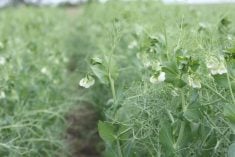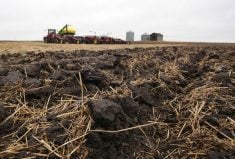A comprehensive look at Saskatchewan’s agricultural greenhouse gas emissions shows they have doubled in the last 30 years.
The report by National Farmers Union policy assistant John Mills found emissions were 11.1 million tonnes per year in 1990 and 22 million tonnes in 2021.
Rising emissions from nitrogen fertilizer production use are a main contributor, as application has quadrupled since 1990, and emissions from farm fuel use have more than doubled, according to the report.
Read Also

Saskatchewan throne speech promises strong economy
Saskatchewan’s legislative agenda for the coming year will focus on meeting the challenges of new world trading relationships, said the speech from the throne.
At the same time, about 16 million tonnes of carbon are sequestered annually in Saskatchewan soils.
Mills said it was important to break out Saskatchewan’s numbers from national data because it has about 40 percent of cropland and 30 percent of emissions. As well, farms vary greatly across the country.
“When we’re talking national numbers, we’re averaging out a farm in Saskatchewan and a farm in Ontario and a farm in P.E.I., and those three farms have different sources of greenhouse gas emissions,” he said.
“We think it’s also important to know what are the specific drivers of greenhouse gas emissions in Saskatchewan because that leads us to what are the solutions that are going to work in that context.”
Mill said he was surprised to see the magnitude of the increase of emissions, considering national numbers aren’t growing as fast.
He said it’s important to include upstream emissions, such as those incurred during fertilizer production, to get a true picture of all the contributors to emissions.
However, it’s also important to drive a sense of urgency in government to support alternatives so that farmers can move away from fossil fuel use.
“Can we get some really serious and sustained research commitments from the government to develop things like battery electric, to develop other alternatives and a whole suite of things so that farmers ultimately have the options that they need,” Mills said.
He said governments should provide extension services to help farmers learn and adapt. Farmers are already doing the difficult job of growing food amid uncertainty, and asking them to navigate different beneficial management practices puts more pressure on them.
“If you have a complex problem like agricultural greenhouse gas emissions, that’s necessarily going to require a suite of complex solutions and the government really needs to be stepping up here to support farmers in that process,” he said.
In the short term, he advocates more soil testing and use of 4R principles.
The NFU plans to complete reports for Ontario and the Maritimes within the year.
















